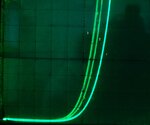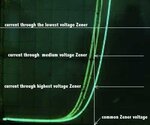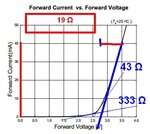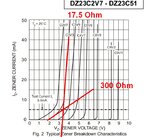Chips & Chips
Junior Member level 3

- Joined
- Sep 21, 2012
- Messages
- 31
- Helped
- 7
- Reputation
- 14
- Reaction score
- 7
- Trophy points
- 1,288
- Activity points
- 1,707
An article for a constant Voltage power supply in the latest issue of Nuts & Volts magazine shows that the commercial module that the author uses has two 2.5V zeener diodes in parallel. They are in series with a 2.2K resistor which connects to the output of a 78L05 regulator chip. This arrangement supplies a reference Voltage (2.5V) to a couple of comparators for current limiting and charging complete functions.
I have never seen two zeener diodes connected in parallel and am completely puzzled as to why this was done. It does not increase the current as the 2.2K resistor will set that. It can not be for power dissipation as one zeener would only dissipate less than 3 mW. So why use two identical, zeener diodes in parallel?????
Nuts & Volts magazine, May 2014, page 28, figure 4.
I have never seen two zeener diodes connected in parallel and am completely puzzled as to why this was done. It does not increase the current as the 2.2K resistor will set that. It can not be for power dissipation as one zeener would only dissipate less than 3 mW. So why use two identical, zeener diodes in parallel?????
Nuts & Volts magazine, May 2014, page 28, figure 4.









